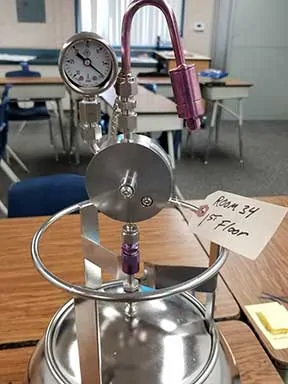

 Indoor Air Quality refers to the air quality within and around buildings and structures, especially as it relates to the health and comfort of building occupants. Understanding and controlling common indoor pollutants can help reduce your risk of indoor health concerns.
Indoor Air Quality refers to the air quality within and around buildings and structures, especially as it relates to the health and comfort of building occupants. Understanding and controlling common indoor pollutants can help reduce your risk of indoor health concerns.
Short-term and Treatable Effects
Some health effects may show up shortly after a single exposure or repeated exposure to a pollutant. These include irritation of the eyes, nose, and throat, headaches, dizziness, and fatigue. A simple treatment may include eliminating the person’s exposure to the source of the pollution.
Long-term and Serious Concerns
The relative importance of any single source depends on how much of a given pollutant it emits and how hazardous those emissions are. In some cases, factors such as how old the source is and proper maintenance are significant. Some sources, such as building materials, furnishings, and products like air fresheners, can release pollutants more or less continuously. Pollutant concentrations can remain in the air for long periods after some activities making Indoor Air Quality a serious concern in the 21st century, especially as it relates to these types of events:
Indoor Air Quality Surveys
IAQ surveys of facilities, such as schools, offices, warehouses, industrial, and commercial buildings, can identify the environmental pollutant source(s) and help develop a plan to alleviate problems. In our experience, numerous sources contribute to poor IAQ; the most common include:
Investigation and Remediation
Industrial Hygienists help building owners, facility engineers, property managers, and building tenants with investigations of the factors contributing to poor IAQ in buildings. IAQ depends on water and air infiltration pathways or HVAC systems, which can cause construction materials to corrode, degrade, or become biologically compromised, and possibly with a loss of structural integrity.
IAQ investigation and remediation can also mitigate threatened lawsuits and minimize toxic tort risk.
Selecting an Industrial Hygienist
Look for a Certified Industrial Hygienist – CIH. These individuals meet stringent requirements for education and experience, and through examination, have demonstrated an above-average level of knowledge and skills in air sampling and instrumentation, among other specialized services.
To make the most of your budget dollars, look for a CIH with a demonstrated track record of successful investigations and mitigations. The CIH should preferably have experience ranging from building designs specifying low VOC-emitting materials, implementation of corrective measures to accelerate off-gassing, and removal of VOCs in building materials. Additionally, LEED green buildings and air clearance sampling after remediation are helpful. These CIHs’ are very proficient and should eliminate unnecessary costs associated with expensive analytical testing and can design investigations that address specific IAQ issues.
Recommended Resources:
EPA, Indoor Air Quality in Offices and Other Large Buildings page
Industrial Hygiene comprehensive services, case studies, and publications
About the Author: Jed Douglas is a Senior Project Advisor specializing in Occupational Health and Safety Programs. He is a Certified Industrial Hygienist (CIH), a Certified Safety Professional (CSP), a licensed Professional Geologist in California, Oregon, Washington, and Arizona, and a U.S. Green Building Council LEED Accredited Professional. He has over 25 years of experience as a health and safety specialist and senior project manager and has managed numerous environmental projects involving safety, soil and groundwater investigations and the remediation of hazardous constituents; and, indoor air quality (IAQ) assessments for physical, chemical, and biological contaminants. You may contact Jed Douglas directly at or contact a professional in your area at .